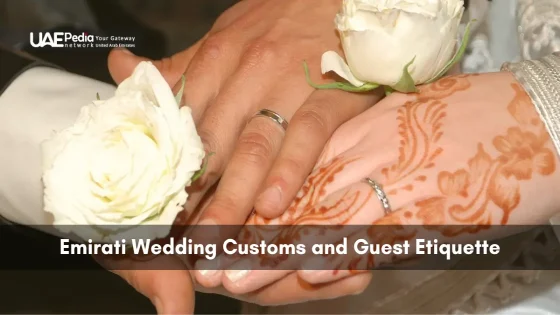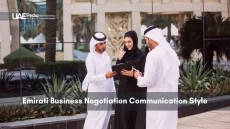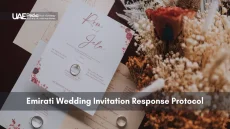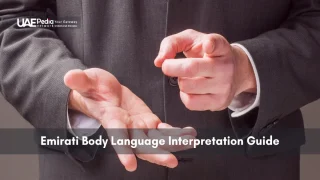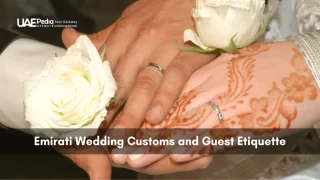What if weekends held more than relaxation? In this country along the Persian Gulf, 83% of residents participate in weekly rituals that blend ancient rhythms with today’s fast-paced life. Fridays here aren’t just days off—they’re living threads connecting generations.
The scent of cardamom coffee drifts through air-conditioned majlis gatherings as families reunite. Skyscrapers glow amber at sunset, mirroring desert dunes beyond city limits. This harmony of old and new defines social rhythms across the seven emirates.
Our guide walks you through these weekly customs without textbooks or jargon. You’ll discover how spiritual reflection shapes morning routines, why shared meals become storytelling feasts, and where urban buzz pauses for quiet connection. We’ll explore how traditions adapt—like video calls joining elders’ face-to-face wisdom circles.
By the end, you’ll grasp:
- How community bonds strengthen through structured yet flexible routines
- The role of hospitality in bridging past and present
- Practical ways to respectfully engage with local rhythms
Understanding the UAE’s Rich Cultural Landscape
Picture this: desert caravans once carrying spices and stories now meet glass towers humming with innovation. The united arab emirates didn’t just appear—it grew from ancient Bedouin codes, Islamic teachings, and coastal trade routes along the persian gulf. As one Abu Dhabi elder shared:
“Our grandparents measured time by monsoon winds. Now we sync calendars with Dubai’s stock market—but our roots still drink from the same well.”
Foundations Carved in Sand and Faith
Islam’s arrival in the 7th century shaped everything from social customs to architecture. Mosques became community hubs, while traditions like Ramadan wove spiritual rhythms into daily life. Abu Dhabi’s Qasr Al Hosn fortress—originally a watchtower in 1761—stands as a stone-and-coral witness to this blend of faith and survival.
Tradition’s Dance with Tomorrow
Today’s emirati culture thrives on balance. Women lead boardrooms while preserving henna art. Falconry coexists with AI labs. Three key shifts redefine modern arab culture:
- Global workforce blending with local hospitality norms
- Artists reimagining calligraphy through digital installations
- Youth honoring elders’ wisdom while scripting new social codes
As Dubai’s skyline proves, innovation here doesn’t erase history—it adds new chapters. The challenge? Keeping ancestral values alive in a world where rushing is often used but stillness remains sacred.
uae friday significance cultural customs: The Heart of Friday Rituals
There’s a hush that falls over cities at noon—not from emptiness, but anticipation. Across the seven emirates, weekly rhythms pivot around spiritual connection and reconnection. This isn’t just a pause; it’s a reset button pressed collectively.
Friday Prayers and Spiritual Gatherings
Mosques hum with whispered verses as crowds gather, their shoes left neatly outside like promises of return. “The first row feels like standing shoulder-to-shoulder with ancestors,” shares a Dubai imam. Men typically lead prayers, while women often observe from home or designated spaces, maintaining traditions that honor both devotion and privacy.
Local Customs and Family Time
Post-prayer, homes buzz with laughter and clinking teacups. Greetings here carry weight—the right hand pressed to the heart signals respect, a gesture tracing back to Bedouin trust rituals. Families might visit falconry exhibitions, where these regal birds remind everyone of heritage soaring into modern skies.
Shared meals become story swaps. Grandparents recount pearl-diving tales while teens share TikTok trends—proof that social customs evolve without erasing roots. These moments form a living mosaic, one where Emirati identity shines through quiet gestures and loud togetherness.
Emirati Traditions and Friday Rituals
Imagine a table where golden saffron threads meet crisp white fabric—a feast for both palate and eyes. These sensory anchors shape weekly gatherings, blending nourishment with cultural storytelling. Let’s unwrap the flavors and fabrics that turn ordinary Fridays into living heritage exhibits.
Special Food and Festive Cuisine
The sizzle of majboos—slow-cooked meat with turmeric and dried lime—fills homes by midday. Camel meat, once a desert survival staple, now stars in celebratory dishes like ghuzi, its tenderness a nod to Bedouin hospitality. Spices like cardamom and saffron aren’t just ingredients; they’re time capsules preserving trade route legacies.
Families often share luqaimat, fried dough balls drizzled with date syrup. “These sweets are edible maps,” laughs a Dubai chef. “Each bite traces migration patterns through ingredients.” Discover more about these holiday customs that transform kitchens into cultural classrooms.
Traditional Dress and Symbols
Snow-white kanduras for men and flowing abayas for women mirror the desert’s simplicity. Black-rope agals crown men’s headscarves, symbolizing unity—a tradition also known among Gulf tribes as a mark of dignity. Silver khanjars (daggers) dangle from belts, their curved blades whispering ancestral tales.
During celebrations, women’s dresses bloom with metallic threads—a dance of light mimicking oasis reflections. As one designer notes:
“Our clothes aren’t fabric. They’re wearable poetry.”
Even dance becomes fabric in motion. The yowla, a stick performance, sways like palm fronds—its rhythm echoing camel caravan cadences. Together, these elements stitch past to present with every shared meal and embroidered hem.
The Role of Family and Community on Fridays
Hear that? It’s the collective click of front doors opening as extended clans reunite. In the united arab emirates, homes transform into hubs where generations collide—and collude—to keep ancestral bonds thriving. Forget calendar alerts; the rhythm of laughter and clattering dishes marks time here.
Family Gatherings and Communal Meals
Long tables groan under platters of harees (wheat-and-meat porridge) and saffron rice. Recipes passed through grandmothers’ hands become edible heirlooms. A Dubai mother shares:
“We argue over whose machboos tastes closest to great-grandma’s—but really, we’re measuring love.”
Post-meal, elders sip cardamom coffee while kids chase between couches. These chaotic moments stitch families tighter than any emirati embroidery. Even modern marriages blend old and new—couples exchange gold jewelry at ceremonies, mirroring ancestral dowry customs.
Beyond blood ties, neighborhoods buzz with potluck feasts. Strangers become cousins over shared luqaimat dough balls. This holiday tradition of open-door hospitality now flavors weekly routines, proving community isn’t built—it’s cooked slowly, together.
In a nation where skyscrapers outnumber date palms, Friday’s magic lies in its simplicity: phones down, hearts open. Whether you’re born here or just passing through, these gatherings whisper a universal truth—home isn’t a place. It’s the people who save you a seat at the table.
Cultural Expression Through Art, Poetry, and Dance
Ever watched sand transform into stories? Across the Emirates, creative traditions breathe life into history—brushstrokes on canvas, verses sung to oud strings, and feet drumming earth in patterns older than skyscrapers. These aren’t just performances—they’re passports to understanding Emirati culture.
Threads of Time: From Weaving to Pixels
Bedouin women once spun camel hair into Al Sadu textiles—geometric patterns mapping desert journeys. Today, their descendants blend these motifs with digital projections at Dubai’s Alserkal Avenue. A weaver in Al Ain laughs:
“My loom talks to my iPad now. Same stories, new alphabet.”
Rice plays a quiet but vital role here. At weddings, guests toss golden grains to bless couples—a practice echoing ancient harvest rituals. Museums display ceremonial bowls where food and art merged, proving creativity fuels both stomachs and souls.
Words That Dance, Songs That Soar
Nabati poetry—called “the people’s verse”—pulses through markets and malls. Improvised rhymes tackle everything from love to robot waiters. Young poets scroll verses on phones while elders recite from memory, creating a living library of daily life and social customs.
| Art Form | Traditional Version | Modern Adaptation | Symbolism |
|---|---|---|---|
| Poetry | Oral Nabati verses | Instagram poetry slams | Community values |
| Dance | Ayala stick dances | Fusion hip-hop troupes | Unity & strength |
| Visual Art | Henna hand designs | Augmented reality murals | Identity in motion |
Festivals like Sharjah’s Biennial explode with this energy. Visitors sway to yowla dances one hour, then watch AI-generated calligraphy the next. Through every brushstroke and beat, a truth emerges: here, art isn’t just made. It lives.
Modern Influences and Global Curiosity
Ever time-traveled using a metro card? In the United Arab, hyper-modern cities pulse with traditions that refuse to gather dust. Skyscrapers wear wind-tower patterns from ancient cooling systems. Galleries mix camel-hair textiles with holographic installations. This isn’t just progress—it’s a conversation across centuries.
Take architecture: Abu Dhabi’s Louvre mirrors a floating desert rainstorm, while Dubai’s Burj Khalifa echoes Islamic geometric patterns. A local architect explains:
“We design buildings that whisper to ancestors while texting the future.”
| Tradition | Modern Twist | Global Impact |
|---|---|---|
| Mud-brick forts | 3D-printed smart homes | Pioneering sustainable tech |
| Handwoven textiles | AI-generated fabric patterns | Exhibited in Paris/Milan |
| Spice trade routes | Michelin-starred fusion kitchens | Attracting food influencers |
Food tells its own story. Restaurants now serve camel-burger sliders alongside machboos—proof that meat dishes adapt without losing their soul. Even religious celebrations see global touches, like eco-friendly lanterns during Ramadan.
Dance floors showcase this blend too. Hip-hop crews incorporate ayala stick rhythms, turning heritage into viral trends. Social media amplifies these mashups, making Emirati art a global currency.
The secret? Tradition plays referee, not roadblock. Elders share folklore via podcasts. Teens debate tribal poetry in coffee shops. Here, culture isn’t preserved in amber—it’s remixed daily, inviting the world to join the chorus.
Practical Insights: Navigating Social and Business Etiquette
Ever wondered how to ace a business lunch while respecting centuries-old traditions? In the united arab emirates, social codes blend warm hospitality with clear expectations. Let’s decode the essentials—from handshakes to hierarchy—so you can navigate interactions like a pro.
Key Etiquette Tips for Visitors
Start with greetings: Use your right hand for handshakes and passing items. A local entrepreneur advises:
“Left-handed? No problem—just apologize with a smile. It’s the awareness that counts.”
Dress codes lean conservative. Men should opt for collared shirts in business settings, while women pair knee-length skirts with sleeves. Save beachwear for resorts—even tank tops draw stares at malls.
At shared meals, expect generous portions of meat and vegetables. Sample multiple dishes, but leave a bite to signal fullness. Pro tip: Arrive 15 minutes late to social events—it’s polite here. Business meetings? Be punctual.
Understanding Business Culture in the UAE
Abu Dhabi’s glass towers host global deals, but hierarchy matters. Address senior executives by title (“Sheikh” or “Dr.”) until invited otherwise. Meetings often start with casual chats about family or poetry—a test of relationship-building skills.
| Social Setting | Business Setting | Why It Matters |
|---|---|---|
| Accept Arabic coffee with right hand | Present business cards right-handed | Shows respect for social customs |
| Compliment host’s dress | Discuss market trends before deals | Builds trust in the arab world |
Phrases like “Insha’Allah” (God willing) smooth over scheduling uncertainties. Avoid discussing politics or personal finances. Remember: Abu Dhabi’s blend of tradition and global ambition makes cultural fluency your best negotiation tool.
Closing Reflections: Embracing the UAE’s Living Heritage
Ever traced history through a single sip of coffee? In the united arab emirates, traditions don’t gather dust—they dance. From saffron-kissed rice dishes to National Day parades lighting up skylines, this country stitches past and present with golden threads.
Families here write love letters to time. Grandmothers grind spices ingredients while daughters code apps preserving henna patterns. Men brew cardamom coffee in right hand-held pots, their laughter mingling with children’s TikTok drafts. It’s a place where falconry meets AI, and poetry scrolls on smartwatches.
The real magic? Everyone’s invited. Whether savoring camel meat at a desert feast or cheering at fusion dance performances, you’re handed a brush to paint this living canvas. Men women alike guard heritage while sketching tomorrow—proving culture isn’t a museum exhibit, but a shared heartbeat.
So slip off your shoes. Let Dubai’s skyline tell tales of pearl divers, and Abu Dhabi’s mosques hum ancient lullabies. Here, every dress twirl and spice market haggle whispers: “This is home—and yours too, if you’ll stay awhile.”
Friday holds spiritual significance as the Islamic holy day, marked by congregational prayers (Jumu’ah) and family bonding. It’s a time to pause work, reflect, and share meals—think slow-cooked harees or machboos with loved ones.
Modesty matters! Men often wear crisp white kanduras, while women don elegant abayas. Visitors should avoid revealing clothing—lightweight, loose-fitting attire works best, especially if invited to a majlis gathering.
Absolutely. Families gather over dishes like fragrant lamb ouzi, saffron-infused rice, and luqaimat dumplings drizzled with date syrup. Sharing from a communal platter using your right hand? That’s the Emirati way.
You’ll see tech-savvy youth posting falconry reels on TikTok—then heading home for generations-old coffee rituals. Malls buzz post-prayer, but elders still share Bedouin poetry under date palms, blending past and present seamlessly.
Avoid scheduling meetings during prayer times (check local listings). If invited to a home, bring dates or sweets—but decline food at least once before accepting. And never point your soles at someone; it’s considered rude.
From calligraphy-adorned mosque domes to contemporary dance troupes reimagining ayala performances, creativity thrives. Listen for oud melodies at heritage festivals or spot henna artists transforming hands into living art before family gatherings.

